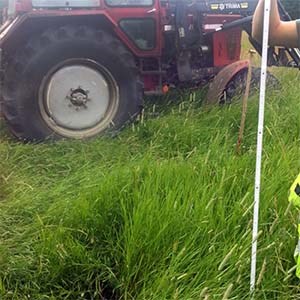Facts:
This project is financed by Lantmännen Research Foundation and starts 2021.

Could impaired nutritional quality from delayed harvest of ley be counteracted by increasing the stubble height drastically and how would the total annual yield and quality then be affected?
Leys for high yielding dairy cows must be harvested at an early stage. This is especially valid for the first cut, the primary growth which has the largest potential for replacing concentrates in the ration. If the harvest is delayed by unfeasible weather, digestibility and energy available to the ruminant will decline. In addition, the intake capacity is reduced so that the total effect is impaired milk yield and an increased requirement for concentrate supplementation.
The wider the harvest window – the time frame when a high quality forage can be harvested – the larger the chance for success with the harvest. In a preceding experiment where ley grasses were divided into vertical fractions, there was a distinct quality gradient with increasing concentrations of metabolizable energy and crude protein with increasing height. This project investigates how quality and total annual yield is affected if extensively increased stubble height is used as a method to compensate for delayed harvest in the first cut.
In the experiment, plots are harvested in grass/clover leys during the full second harvest year. The first cut is either harvested at a normal maturity stage for high quality dairy forage with normal stubble height (8 cm) or delayed by approx. one week with normal, doubled and tripled stubble heights, respectively. At the second and third cut, all sub-plots are harvested at the same time with normal stubble height. Dry matter yield is recorded and samples are analyzed with wet chemistry for metabolizable energy, crude protein and fiber (NDF).
Torsten Eriksson, torsten.eriksson@slu.se
Horacio Gonda, Mats Höglind (NIBIO Norway), Niels Andresen (Ekologiska lantbrukarna)
This project is financed by Lantmännen Research Foundation and starts 2021.